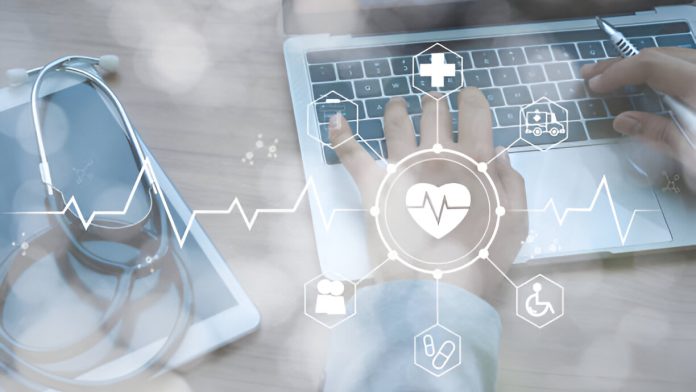Telehealth have completely changed the way that people get their medical diagnoses. The technology of today allows us to book virtual appointments with different doctors for many different diagnoses. Although the current state of telehealth cannot make all medical diagnoses. With the rate at which technology like camera quality, Wi-Fi speeds, and augmented reality AR are improving, telehealth seems to be the future of medicine.
In this blog, we will explore how telehealth can treat some common health conditions that exist today.
1. Upper Respiratory Infections
Telehealth commonly treats upper respiratory infections, including the common cold, sinusitis, and bronchitis. The doctors on the other end can easily recognize symptoms associated with upper respiratory functions. These symptoms include cough, congestion, sore throat, and fever.
Once doctors identify these symptoms, they can prescribe medications over the phone and send them directly to the patient’s pharmacy. Besides the over-the-counter medicines, doctors can also give guidance to help control the symptoms at home. And if the situation is severe they can be recommended to go to the hospital.
2. Mental Health Conditions
Telehealth commonly treats mental health cases, specifically managing conditions such as depression, anxiety, and stress-related disorders through on-call therapy sessions. These sessions effectively help in managing these conditions.
Telehealth makes communication effective between the patient and the doctor. Since the patient is receiving therapy from the comfort of their own home, they are much more comfortable and share their feelings and symptoms freely. It not only kills the stigma surrounding receiving mental health care but also makes it more readily available for people with remote access or those who belong to a lower-income group.
3. Chronic Disease Management
Chronic Diseases like asthma and diabetes, cannot be initially diagnosed by telehealth effectively. However, monitoring and managing the treatment using telehealth is highly effective. Patients can have regular check-ins and follow-up appointments from the convenience of their homes.
It allows patients to discuss any new test results and medicine effectiveness without having to commute to and from clinics. Healthcare providers can administer any changes in medication dosage via telehealth. Combining telehealth with remote monitoring devices for blood glucose and blood pressure allows healthcare providers to receive data directly. This enables timely interventions in case of an emergency.
4. Dermatological Issues
Skin issues like acne, eczema, psoriasis, and rashes can be easily administered with the help of telehealth. The patient can schedule a video call with their dermatologist or even send high-quality photos of their skin to receive an accurate diagnosis and treatment plan.
Practitioners can authorize oral medications and creams for patient use and book follow-up consultations to discuss improvements in skin condition or any side effects from the previously given medications.
5. Gastrointestinal Problems
Not all, but many common gastrointestinal issues like acid reflux, irritable bowel syndrome (IBS), and gastroenteritis can be managed through telehealth. The discussion of such issues usually revolves around a patient’s symptoms, dietary habits, and other medications that they may already be using.
Virtual consultations can recommend the necessary lifestyle and dietary changes. Moreover, online pharmacies can send or deliver directly any required medication to patients’ pharmacies or homes. For more serious cases the doctors can determine if any tests are necessary or if the patient should just opt for an in-person visit.
6. Minor Injuries
Telehealthcare providers can assess and treat minor injuries like cuts, bruises, sprains, and strains. They can assess the level of injury through video calls or sharing photos. The medical professional can then provide the relevant care guidelines, painkillers, and advice on if the patient should go to a hospital. In case of a minor injury search for telehealth care and in case of emergencies and more severe injuries always search for good telehealth care.
7. Allergies
One can efficiently manage and treat allergies, whether seasonal or genetic, via telehealth. By staying at home the patient does not come into contact with the specific allergens in the atmosphere. The patient can discuss symptoms and triggers on call and the health care provider can recommend medicines, treatments, and any preventive measures that the patient should act upon. And just like in the previously discussed cases, it can allow for follow-ups to discuss any improvement or any difficulty faced.
8. Infectious Diseases
Telehealth can identify and treat highly contagious diseases like influenza, urinary tract infections UTIs, and even pink eye. Telehealth professionals can recognize symptoms, recommend tests, and prescribe medication without putting the health of the general public at risk by minimizing the chances of an outbreak.
9. Musculoskeletal Issues
These include conditions like back pain, joint pain, muscle pain, arthritis, etc. The patients can describe their pain on an audio call. Virtual physical therapy sessions can help patients or their guardians understand how pain affects their range of motion through video calls. During these sessions, therapists can teach exercises and stretches to aid in the recovery process.
10. Preventive Care
Finally, telehealth is a great replacement for routine wellness visits to a conventional clinic. Annual check-ups, health screenings, and lifestyle counseling can all be conducted virtually. Whether it is a review of medical history, a general health checkup, an understanding of routine test results, or even immunization recommendations, Telehealth medical professionals can help in preventive care measurements.
Conclusion
Telehealth has many brilliant use cases as discussed in this blog. We need to support this method of healthcare to see more improvements in it shortly. It is not only beneficial for the customer but also for the healthcare providers. Customers can benefit from booking appointments at their convenience. They also do not have to worry about traffic or transportation expenses. The medical healthcare providers can also benefit, by smaller diagnoses being cleared on mobile phones. This means that ER and specialists will be available in your vicinity to answer any bigger emergencies.





